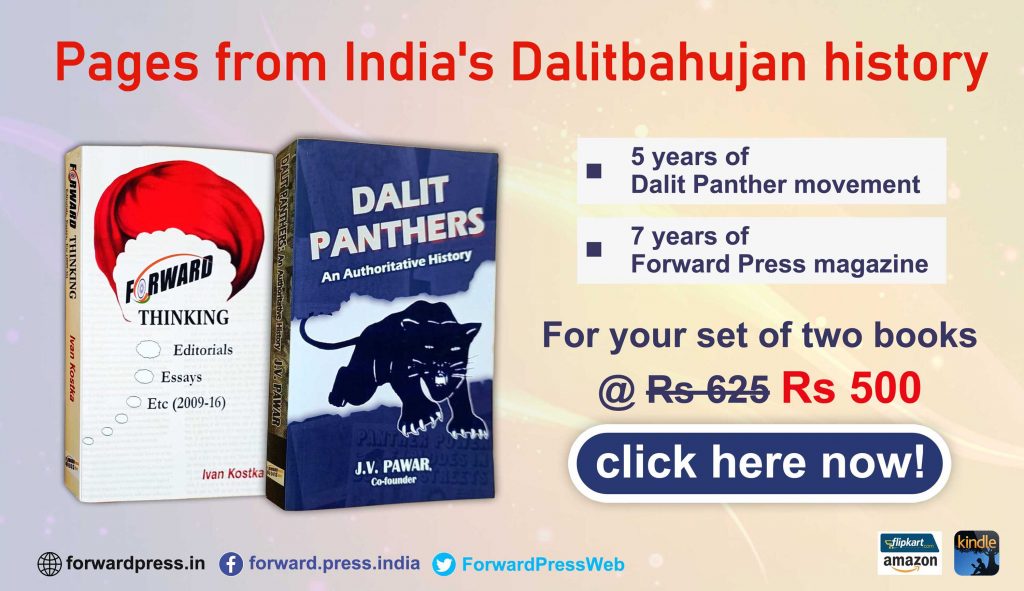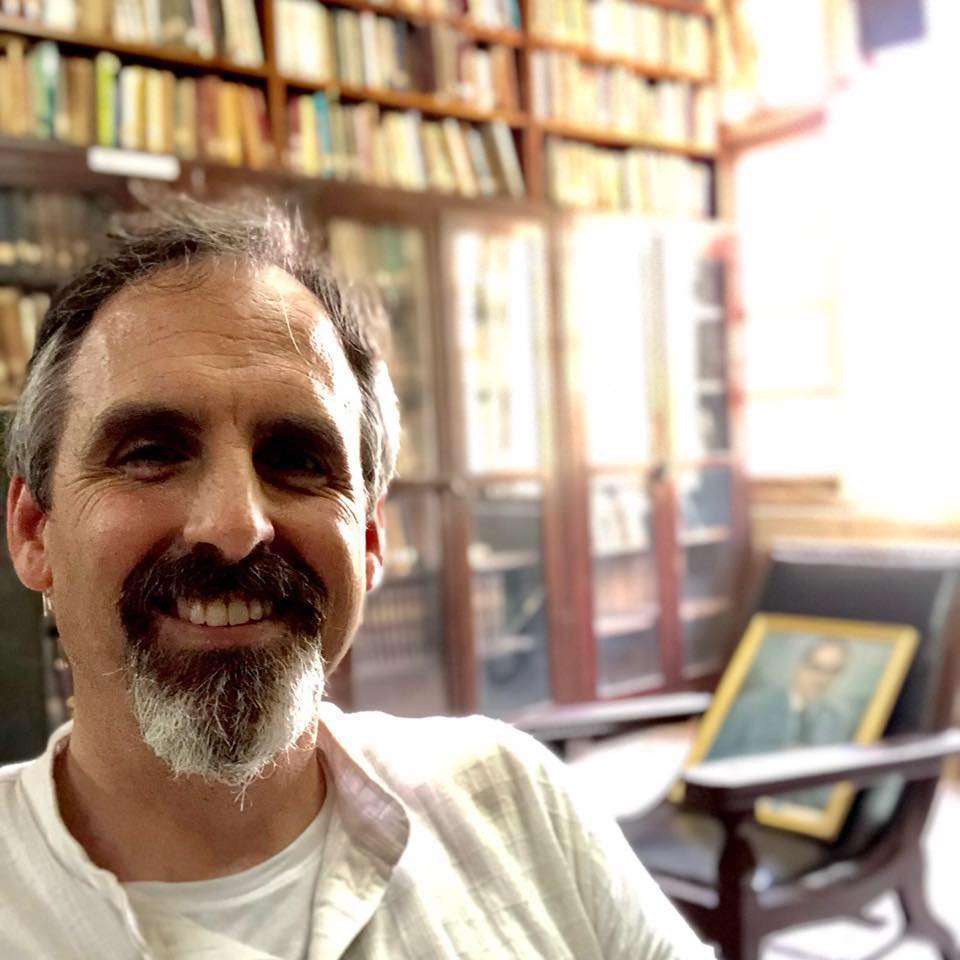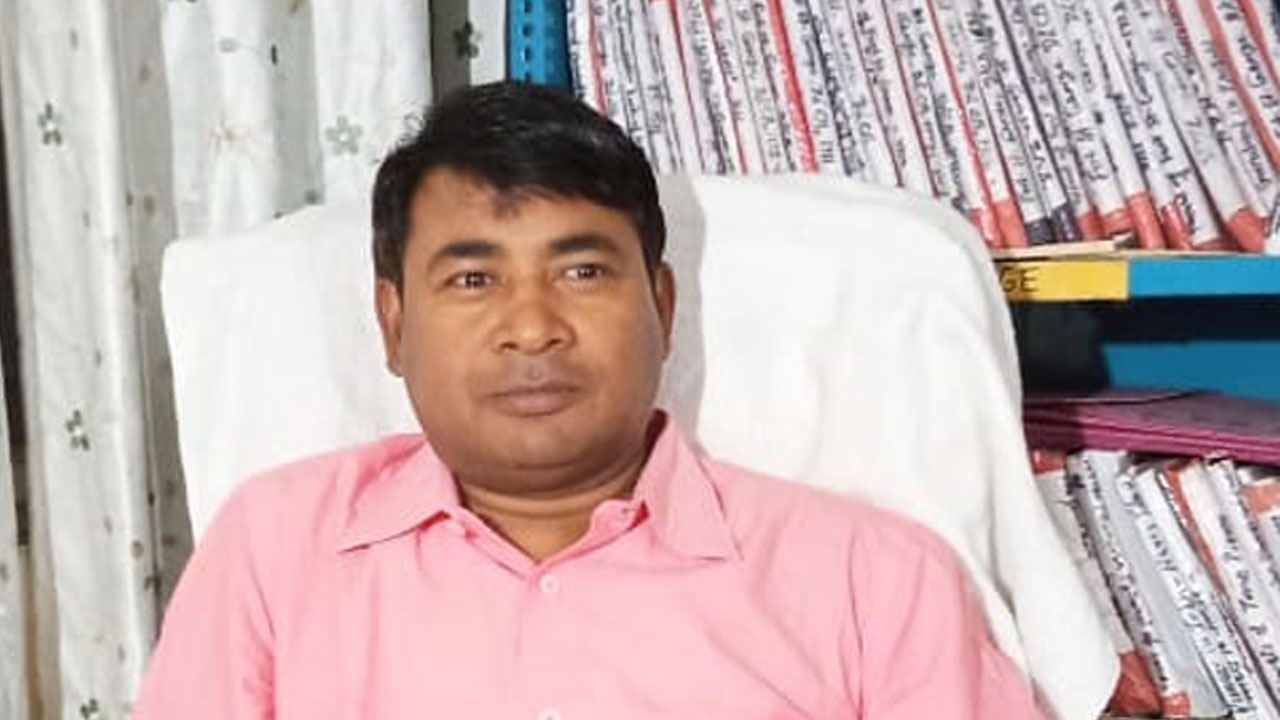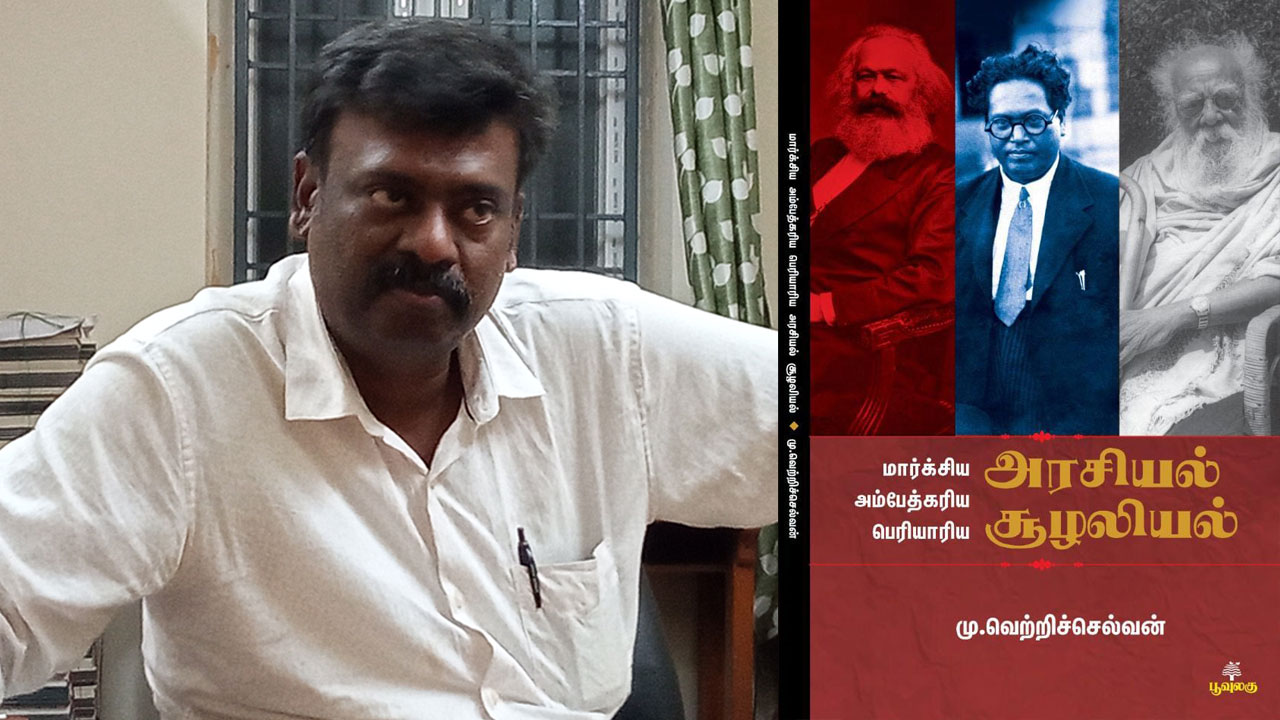Dr Bhimrao Ambedkar, the great social reformer, politician and religious leader, accomplished much in his all-too-short life. Even though it did not appear before he breathed his last on 6 December 1956, Ambedkar’s powerful reconstruction of Buddhism – The Buddha and His Dhamma – was well on its way to the public, eventually being published in 1957. Another work of his, perhaps more controversial, did not share a similar good fortune. As Nanak Chand Rattu recounts, Ambedkar had started a work entitled Riddles in Hinduism in January 1954 and completed it by November 1955. The subject matter was largely a scathing critique of many texts, figures and doctrines that Hindus held dear. Rattu even recounts that Ambedkar had four copies of the work typed up, explaining that “I haven’t got my own press and naturally it has to be given to some Hindu press for printing. It can be lost, burnt or destroyed and my several years of hard labour will thus go waste. Doesn’t matter what the cost involved. I must have a spare copy with me.”[1] Ambedkar’s plans of publishing this book was held up because of his need to find two photos to include, as well as monetary challenges he faced with many of his final book projects. Other commentators, including the editors of Ambedkar’s collected writings and speeches, explore these delays and troubles in detail.[2] Ultimately, all versions of the final manuscripts were lost, and the editors of Ambedkar’s writings and speeches cobbled together the published version from a range of individual chapter manuscripts identified in his papers after his death.
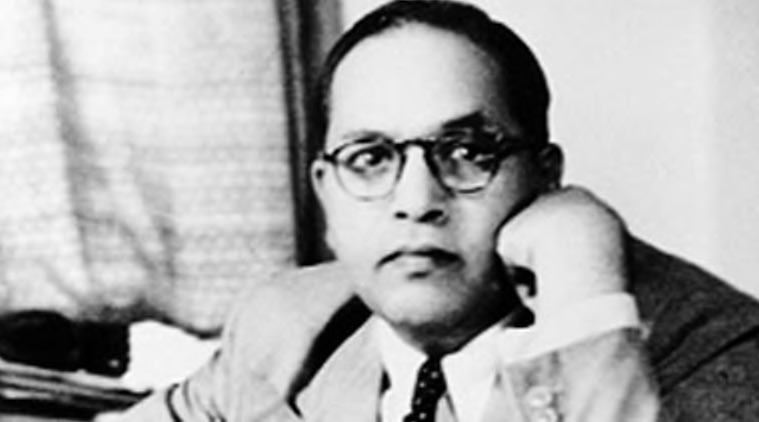
Riddles in Hinduism deserves much more attention than scholars have given it, but my goal in this article is humble. There is a small, but important, mystery in this enigmatic text, one that I believe I can solve through my recent archival work on Ambedkar’s relationship to his intellectual guiding lights. Foremost among these is the American pragmatist, John Dewey. As I’ve argued previously, Ambedkar was deeply influenced by Dewey’s thoughts on topics such as democracy, communication, and political reform.[3] The classes that Ambedkar took as a student at Columbia University 1913-1916 included three courses taught by Dewey. Furthermore, Ambedkar continued to buy, read and heavily annotate Dewey’s books – including the 1908 edition of John Dewey and James Hayden Tufts’ Ethics – long after leaving Columbia University and America. As scholars such as Arun Mukherjee, Meera Nanda, Eleanor Zelliot, Christopher Queen and myself have explored in various ways, Dewey’s influence affected Ambedkar’s political thought as well as the way he pursued reform and persuasion.[4] Pragmatism even influenced the way that Ambedkar appropriated resources in past sources and traditions (including his “Professor Dewey”) and used them in his own innovative arguments such as those contained in his 1936 Annihilation of Caste.[5]
Much more is left to be said on how pragmatist thinkers like Dewey affected the highly educated Ambedkar – as well as to be said on what unique and powerful innovations Ambedkar introduced in the trajectories of philosophical thinking denoted by the term “pragmatism”. In the course of my archival work across India and America in search of resources to help me tell some sort of a new and useful story about Ambedkar’s education and its effects on this grand thinker, I have come across a small riddle in Ambedkar’s Riddles in Hinduism that I can finally solve, and that may lead to more light being thrown onto what I believe is the core of his philosophical commitments: the idea that social democracy is the most important and all-encompassing moral and political ideal that ought to animate our efforts at reform.
A PRAGMATIST RIDDLE IN ‘BRAHMA IS NOT DHARMA’

Let us turn now towards one part of this enigmatic work, the section that is titled “Brahma is Not Dharma, What Good is Brahma?” After perusing one surviving original draft of this document in the Maharashtra State Archives in Mumbai, Ambedkar’s ever-changing writing process becomes clear. The document is a mess of changes, revisions and deletions. On the title page (written in his own distinctive handwriting), we see the full title Ambedkar intended, at least in this draft – “Brahma and Dharma. Why Bramha [sic] was not allowed to become the basis of Dharma?” His changing organizational plans for Riddles in Hinduism are also telegraphed. At the top of the handwritten title page, Ambedkar wrote – and crossed out – designations of “15”, “23”, “22” and “23” again for this chapter, before finally writing “22” and circling it as the final riddle number. The government edition of this work bears the final riddle numbering of “22”, but the finality of the printed page hides Ambedkar’s continual reworking of this important text.
In this riddle Ambedkar explores possible spiritual foundations for democracy, including the classical formula of “All this is Brahma” (Sarvam Khalvidam Brahma).[6] This exploration of Hinduism’s (divided by Ambedkar into “Brahmanism” and “Brahmaism” in this riddle) relationship to democratic government, however, is framed by his discussion of democracy as more than a governmental system – as he puts it, “a democracy is more than a form of Government. It is a form of the organization of Society.”[7] This way of putting the core of democracy should be familiar to readers of his Annihilation of Caste, as he there echoes the words of his teacher, John Dewey, from Democracy and Education that “A democracy is more than a form of government; it is primarily a mode of associated living, of conjoint communicated experience”. From my research trips to Siddharth College in Mumbai, one of the locations that currently preserves books owned by Ambedkar, I’ve determined that Ambedkar owned at least three copies of this important pragmatist book, two of which are heavily annotated in his distinctive style. Ambedkar was clearly taken by Dewey’s idea that democracy was a habit of interaction with one’s community members, and the Indian reformer appropriated this insight into his battles against pernicious forms of caste oppression that he knew all too well.
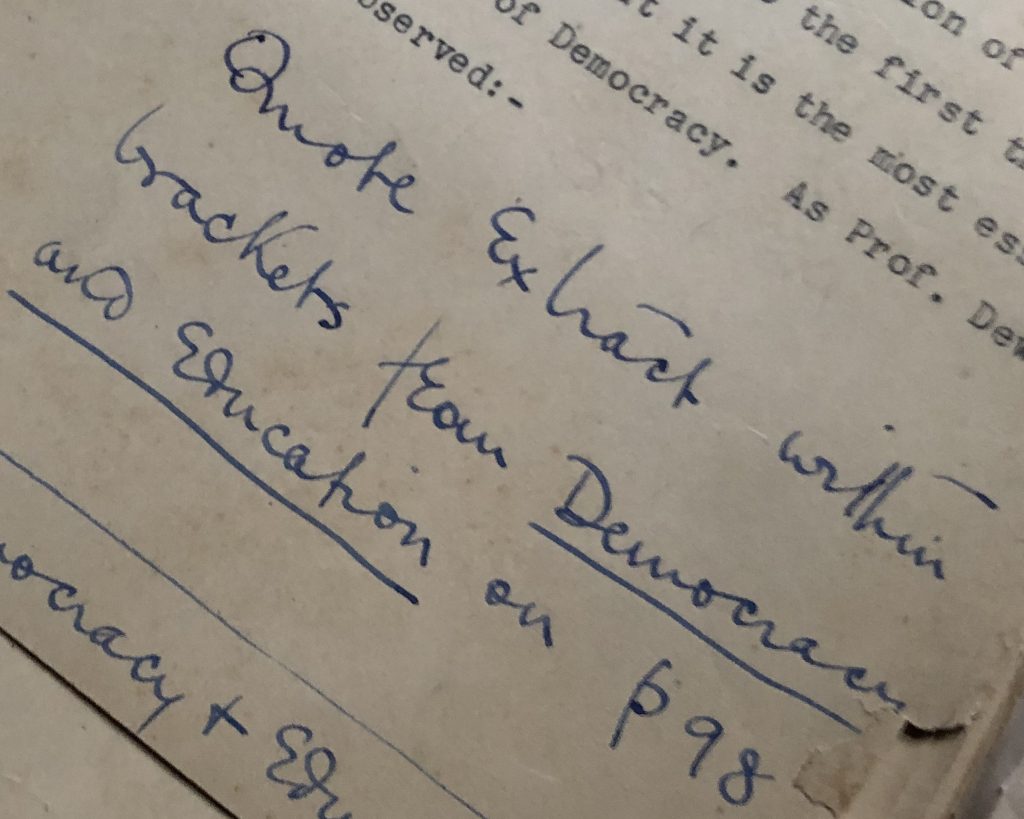
But shortly after this Dewey-inspired way of putting the democratic question, the published version of Ambedkar’s Riddles in Hinduism contains a lacuna. Ambedkar expounds upon democracy’s “absence of stratification of society into classes” and starts to point towards Dewey’s conceptual framework. Ambedkar writes “As Prof. Dewey has observed,” but the published text breaks off. At the bottom of the page, Ambedkar footnotes “Democracy & Education p. 98”. But as the editors of the collected writings and speeches note, the “Quotation referred to by the author is not recorded in the original MS from ‘Democracy and Education’, by Dewey p. 98”.[8] A similar break occurs on the next page in the published edition, with another unsupplied quotation from “Prof. Dewey” vaguely indicated as coming from “Democracy & Education p. 99”. With the right archival digging, might we be able to fill in these blanks and understand more about what Ambedkar took from Dewey to construct his own vision of social democracy in India?
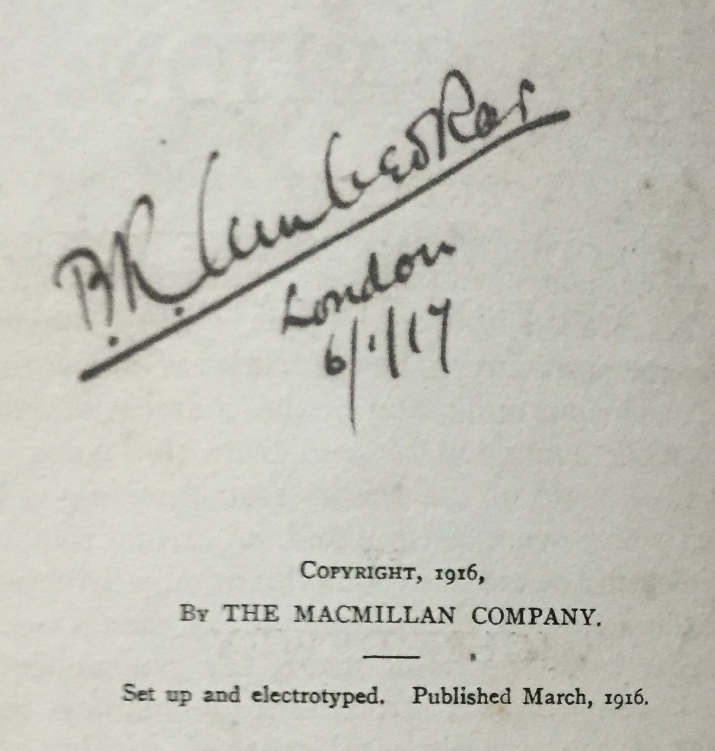
As I perused the manuscript of this riddle held by the Government of Maharashtra, various clues struck me as useful for filling in these gaps, if we but follow them out. In the space where the quotation would rest, below his typed “As Prof. Dewey has observed” sentence and above the handwritten footnote, I saw the following note in Ambedkar’s own handwriting: “Quote extract within brackets from Democracy and Education on p 98.” An identically worded handwritten note is left in the space for the Dewey quotation from page 99.
Both of these notes contain a small but vital hint that the editors of the collected writings and speeches seemingly missed. Ambedkar added the detail that the quotation was contained “within brackets” to both of these reminders. Might we be able to identify the exact passages he intended by consulting the remains of his expansive personal library, part of which is held in the special collections at Siddharth College in Mumbai? Taking this lead, I returned to the large collection of Ambedkar’s books held at this college that he founded back in 1946 to see if I could solve this small pragmatist riddle in his Riddles in Hinduism. In this collection, there are two annotated copies of Democracy and Education. One is a 1916 edition and, as indicated by a handwritten note inside its cover, was procured by Ambedkar while he was studying in London in 1917. The other heavily annotated edition was a 1925 reprint edition.
Inside the 1916 edition that Ambedkar bought in London – after his classroom experiences with Dewey concluded – we see the answer to our questions about what passages Ambedkar intended to place in the Riddle 22. On page 98 of that edition, we see relatively rare brackets marked in Ambedkar’s usual red and blue pencils inserted into the text demarcating the following passage:
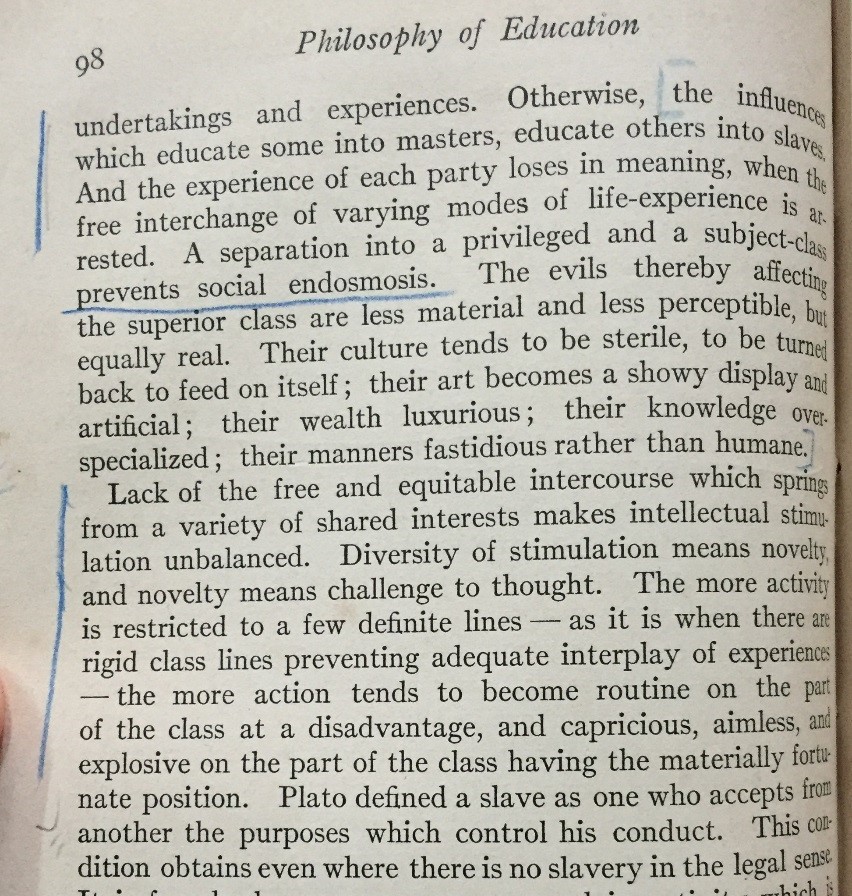
“the influences which educate some into masters, educate others into slaves. And the experience of each party loses in meaning, when the free interchange of varying modes of life-experience is arrested. A separation into a privileged and a subject-class prevents social endosmosis. The evils thereby affecting the superior class are less material and less perceptible, but equally real. Their culture tends to be sterile, to be turned back to feed on itself; their art becomes a showy display and artificial; their wealth luxurious; their knowledge over-specialized; their manners fastidious rather than humane.”[9]
The selection of this passage highlights Ambedkar’s commitment to social democracy being vital to any form of political democracy. The distinctive form of domination and slavery he saw in the millennia-old varna or caste system was unique to India, but in Dewey’s conceptual system he found new tools to explain what was so wrong about this graded hierarchy. Caste divisions stopped the free interchange of ideas, values, interests, or desires among community members. These chasms hurt not only the dominated, but also proffered “evils” that affected the oppressor groups as well. Caste divided groups that ought to work together, inevitably destroying or hurting the interests of one or more of those groups through neglect, negligence, or outright self-focus on behalf of powerful sections of society. Yet for a flourishing and humane community to be created, these groups must freely and meaningfully work together in the course of their coexistence and interaction.
“The results of this lack of reciprocity of interests among groups and individuals,” Ambedkar continues in unpacking this heretofore unspecified quotation from Dewey, “produce anti-democratic results.”[10] These results are spelt out by Dewey in the second unidentified quotation in the published version of this part of Riddles in Hinduism. But looking at Ambedkar’s own 1916 copy of this text, we again see that his mention of brackets points to the passage he wanted to include from page 99:
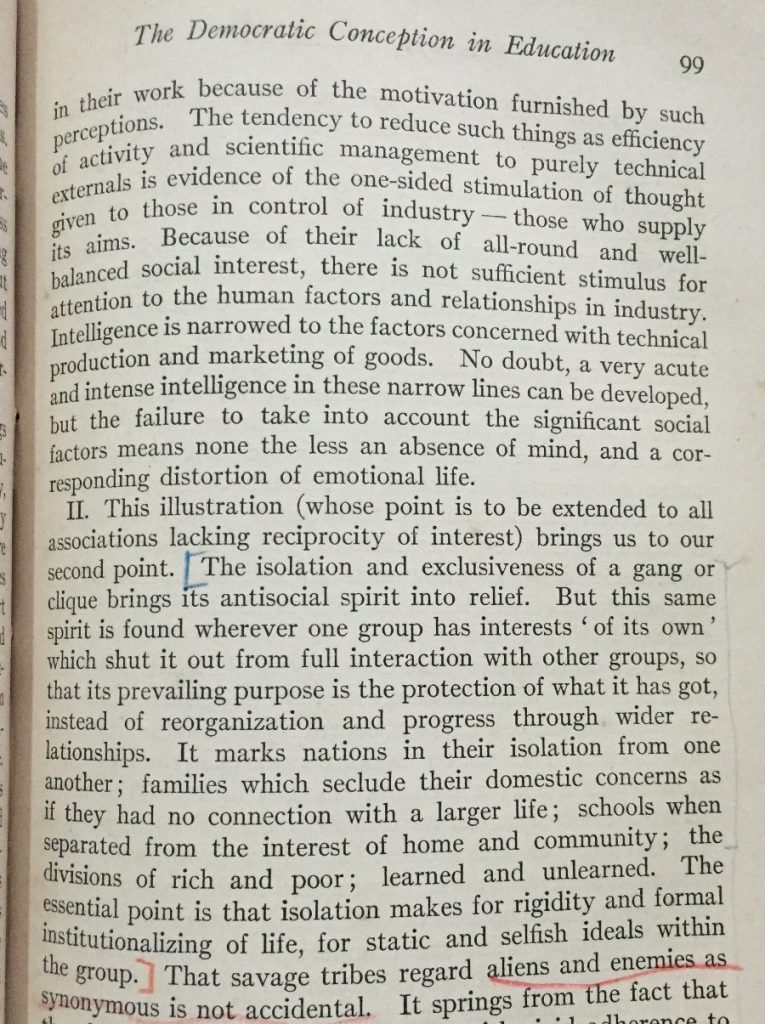
“The isolation and exclusiveness of a gang or clique brings its antisocial spirit into relief. But this same spirit is found wherever one group has interests “of its own” which shut it out from full interaction with other groups, so that its prevailing purpose is the protection of what it has got, instead of reorganization and progress through wider relationships. It marks nations in their isolation from one another; families which seclude their domestic concerns as if they had no connection with a larger life; schools when separated from the interest of home and community; the divisions of rich and poor; learned and unlearned. The essential point is that isolation makes for rigidity and formal institutionalizing of life, for static and selfish ideals within the group.”[11]
Both of these passages – now conclusively identified for the first time, to my knowledge – buttress Ambedkar’s point that “There cannot be democratic Government unless the society for which it functions is democratic in its form and structure”.[12] The present study should allow future editions of Riddles in Hinduism to determinatively fill in these textual lacunae. This small pragmatist riddle buried in a later section of Riddles in Hinduism is now solved.
THE GREAT RIDDLE OF AMBEDKAR AND PRAGMATISM
What of the larger riddle, that of what Ambedkar meant by social democracy, how he thought we should achieve it, and how he went beyond Dewey’s pragmatism in this noble pursuit in the South Asian context? This riddle will take much more time to address, but what I can emphasize now are the vital leads I see emerging. Ambedkar was taken by Dewey’s thought in a very unique way. Dewey’s philosophy allowed him to flexibly engage topics as diverse as epistemology, science, democracy and education, all unified by a pragmatist approach that saw the human as a habit-taking organism that could more or less intelligently adapt itself to natural and social environments. Ambedkar agrees with Dewey that democracy is really a habit or personal way of life, and not simply a matter of official or elite decision-making procedures, and states this much in this part of Riddles in Hinduism: “Whether the Democratic form of Government will result in good will depend upon the disposition of the individuals composing society. If the mental disposition of the individuals is democratic then the democratic form of Government can be expected to result in good Government.”[13]
Like Dewey, Ambedkar thought that this point had not been noticed often enough. He notes early on in Riddle 22, “Unfortunately to what extent the task of good Government depends upon the mental and moral disposition of its subjects has seldom been realized.”[14] Late in his life in the 1950s, Ambedkar extends a theme present in Annihilation of Caste that the ideal social democracy will balance the values of equality, liberty and fraternity. These values arise in that seminal 1936 work alongside of his evocation of “social endosmosis” as well as echoes of Dewey in observations such as, “An ideal society should be mobile, should be full of channels for conveying a change taking place in one part to other parts.”[15] This flexible and shared nature of a community that fits the ideal of social democracy is based upon free communication and intercourse among all parties. He even goes so far as to equate “social endosmosis” in Annihilation of Caste with one of the values: “This is fraternity, which is only another name for democracy.”[16]
Ambedkar’s genius is that he takes this idea out of the American political context and adapts it to the South Asian context suffused with a range of religions, colonial domination and caste oppression. In Riddles in Hinduism, his engagement with Dewey’s thought on democracy gets a powerful new inflection. As he did in 1936, Ambedkar elevates fraternity to a vital position above and beyond equality and liberty. But he does this by engaging religion as a vital mechanism through which to give meaning and efficacy to fellow-feeling. In an important passage in Riddle 22, Ambedkar writes:
“Some equate Democracy with equality and liberty. Equality and liberty are no doubt the deepest concern of Democracy. But the more important question is what sustains equality and liberty? Some would say that it is the law of the state which sustains equality and liberty. This is not a true answer. What sustains equality and liberty is fellow-feeling. What the French Revolutionists called fraternity. The word fraternity is not an adequate expression. The proper term is what the Buddha called, Maitree. Without Fraternity Liberty would destroy equality and equality would destroy liberty. If in Democracy liberty does not destroy equality and equality does not destroy liberty, it is because at the basis of both there is fraternity. Fraternity is therefore the root of Democracy.”[17]

Like much of his work in the 1950s, Ambedkar turns towards Buddhism as a way to enunciate a universal religion that preserves social justice and that upholds the values of democracy and science. But going far beyond the sense or spirit of Dewey, Ambedkar points out in Riddles in Hinduism that the “main question”, at least for this riddle, is “wherein lie the roots of fraternity without which Democracy is not possible?” Ambedkar’s answer shows the unique angle of his melioriative answer – “Beyond dispute, it has its origin in Religion.”[18] If the question of democracy was a matter of individual attitudes and mental dispositions – a point not unrelated to Dewey’s political thought – Ambedkar’s answer would probably stun Dewey, should he have known about it. For Ambedkar, politics mattered, but arguably some of the most important means and ends of social democracy implicated the creation of fraternity through the right religious means.
For Ambedkar, Buddhism best fit the bill as a religion that was not hostile to the appeals of reason, or to the creation of communities animated by respect and shared interests. Interestingly enough, the original draft of Riddle 22 shows Ambedkar tempted by a Kantian line of justifying his claim that democracy “is an attitude of mind or a philosophy of life”.[19] Immediately after this line in the draft manuscript, he strikes out the following line he previously typed: “The first tenet of [“Democracy,” added here in pencil, is also stricken] which is that no person shall treat another solely or even largely as a means but always mainly as an end.” Ambedkar was a master of many intellectual traditions and conceptual schemes, as his reference to Kant in this draft indicates. The one he kept coming back to in so many of his works, however, was the social thought of Dewey’s expansive and flexible form of pragmatism. There are even tantalizing clues that some of his revisions to The Buddha and His Dhamma were affected by his engagement with Dewey’s later social philosophy.[20] But in Riddles in Hinduism, Ambedkar is set on pushing his novel point that religion holds the key to identifying society’s problems, as well as to its salvation. In terms of the South Asian context, Ambedkar argued that “The Hindu social system is undemocratic not by accident. It is designed to be undemocratic. Its division of society into varnas and castes, and of castes and outcastes are not theories but are decrees. They are all barricades raised against democracy.”[21] But before he lets anyone think that “the doctrine of fraternity was unknown to the Hindu Religious and Philosophic thought,” he points to the intriguing claim that “Hindu Religious and Philosophic thought gave rise to an idea which had greater potentialities for producing social democracy than the idea of fraternity. It is the doctrine of Brahmaism.”[22]
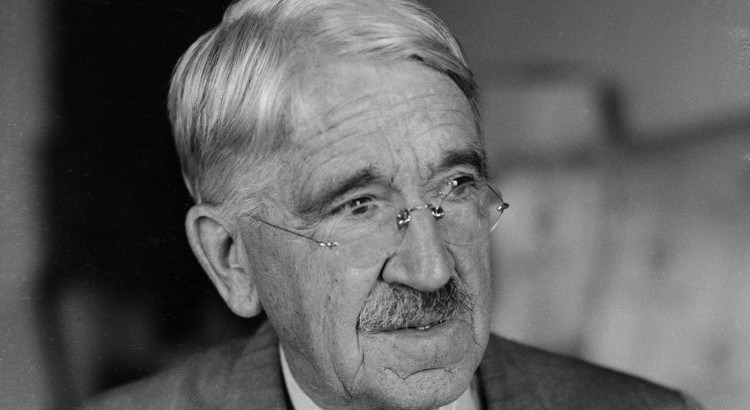
The remaining part of this riddle is dedicated to a curious endeavour to recover and praise a concept with deep roots in the Vedic tradition in a book that seems so negative towards the philosophical and religious thought of most Hindus. Ambedkar intriguingly argues that the idea of Brahma as the only reality could serve as mental attitude or schema that is conducive to the sort of social democracy he previously enunciated solely with the values of fraternity, equality, and liberty:
“If all persons are parts of Brahma then all are equal and all must enjoy the same liberty which is what Democracy means. Looked at from this point of view Brahma may be unknowable. But there cannot be slightest doubt that no doctrine could furnish a stronger foundation for Democracy than the doctrine of Brahma… But to recognize and realize that you and I are parts of the same cosmic principle leaves room for no other theory of associated life except democracy. It does not merely preach Democracy. It makes democracy an obligation of one and all.”[23]
Extending his utterances elsewhere that Buddhist republics represented some of the earliest democratic societies in India, Ambedkar asserts that the notion of Brahma as unified reality leads us to see that “India too must be admitted to have a contribution towards a theoretical foundation for Democracy”.[24] While, of course, Ambedkar never seemed attracted to rereading or reconstructing a democratic form of vedantic Hinduism, he does think that the “great riddle” is why Brahmins armed with the unifying concept of Brahma could still create inequality through caste oppression and not be animated by “the most democratic principle of Brahmaism”.[25]
The lesson of this riddle – and the greater riddle of Ambedkar’s pragmatism – comes into view at the end of Ambedkar’s rather surprising analysis of Brahmaism and Brahminism (viz, Hinduism as a caste-based system). Showing some sympathy towards a Vedic tradition he so often excoriated, Ambedkar ruminated on why “Brahmaism had no social effects”, and indicated that it was “not made the basis of Dharma” or morality. Instead, it was “only philosophy”, or an intellectual concept divorced from social conditions and communal betterment. It was not pragmatic in the sense of being engaged with issues that mattered to a freely interacting social community. Representing a sort of conclusion to this riddle on Brahma and Dharma is Ambedkar’s aspirational statement of what philosophy could be: “Philosophy is no purely theoretic matter. It has practical potentialities.” Religions can be philosophical in this practical sense, a hope that Ambedkar had for his form of socially engaged Buddhism. Like Dewey, Ambedkar saw the most pragmatic and valuable forms of philosophical inquiry as stemming from lived experience and as reaching back to improve the lives of individuals and communities: “Philosophy has its roots in the problems of life and whatever theories philosophy propounds must return to society as instruments of re-constructing society. It is not enough to know. Those who know must endeavour to fulfil.”[26] Unlike Dewey, however, Ambedkar saw the deep significance in religion’s shaping of mental attitudes toward self and others, and the potential resources it held for forming and reforming communities.
[2]See, for instance, S. Anand, ‘The Riddle Of Riddles In Hinduism’, Outlook, 7 April 2016. Available at: https://www.outlookindia.com/magazine/story/the-riddle-of-riddles-in-hinduism/296962.
[3]Scott R. Stroud, ‘The like-mindedness of Dewey and Ambedkar’, Forward Press, 19 May 2017. Available at: https://www.forwardpress.in/2017/05/john-dewey-pragmatism-communication-and-bhimrao-ambedkar/.
[4]For some of the most extensive and detailed work on Dewey and Ambedkar, see: Arun P. Mukherjee, ‘B. R. Ambedkar, John Dewey, and the Meaning of Democracy’, New Literary History, 40 (2), 2009, 347-348; Christopher S. Queen, ‘A Pedagogy of the Dhamma: B. R. Ambedkar and John Dewey on Education’, International Journal of Buddhist Thought and Culture, 24, 2015; Scott R. Stroud, ‘Pragmatism, Persuasion, and Force in Bhimrao Ambedkar’s Reconstruction of Buddhism’, Journal of Religion, 97 (2), 2017, 214-243; Meera Nanda, Prophets Facing Backward: Postmodern Critiques of Science and Hindu Nationalism in India, New Brunswick: Rutgers, 2003. Ambedkar, of course, had other influences; for an account of how Ambedkar’s anthropology teacher, Alexander Goldenweiser, influenced his views on caste, see Jesús Francisco Cháirez-Garza, ‘B.R. Ambedkar, Franz Boas and the Rejection of Racial Theories of Untouchability’, South Asia, 41 (2), 281-296. Such accounts complement the story being told here; they surely do not negate the sustained pattern of influence we see from Dewey’s thought and texts across Ambedkar’s career and body of work.
[5]Scott R. Stroud. ‘Pragmatism and the Pursuit of Social Justice in India: Bhimrao Ambedkar and the Rhetoric of Religious Reorientation’, Rhetoric Society Quarterly 46 (1), 2016, 5-27
[6]Bhimrao R. Ambedkar, ‘Riddles in Hinduism’, Writings and Speeches, vol. 4 (Government of Maharashtra, 1989), 284.
[9]John Dewey, Democracy and Education, New York: MacMillan, 1916, 98. Sentences and phrases from this passage are also used by Ambedkar in ‘Annihilation of Caste’, Writings and Speeches, vol 1 (Bombay: Government of Maharashtra, 1989), 57. For a complete accounting of the echoes of Democracy and Education and other Deweyan texts in Annihilation of Caste, refer to Arun Mukherjee’s work and Scott R. Stroud, ‘Echoes of Pragmatism in India: Bhimrao Ambedkar and Reconstructive Rhetoric’, Recovering Overlooked Pragmatists in Communication: Extending the Living Conversation about Pragmatism and Rhetoric, Robert Danisch (ed), Palgrave Macmillan, 2019, 79-103.
[11]John Dewey, Democracy and Education, New York: MacMillan, 1916, 99. Various parts of this passage are also used by Ambedkar in ‘Annihilation of Caste’, Writings and Speeches, vol 1 (Bombay: Government of Maharashtra, 1989), 51.
[12]Bhimrao R. Ambedkar, ‘Riddles in Hinduism’, Writings and Speeches, vol 4, 282. The recent, and very useful, selection of Riddles in Hinduism published by Navayana “infers” these passages. The editors do not give details on how this inference proceeded, but it presumably was informed by Ambedkar’s parallel echoes and passages in Annihilation of Caste, Arun Mukherjee’s cited study, and contextual clues within Riddle 22. Their inferences are fairly accurate. The first passage they infer, however, omits the initial two sentences included in Ambedkar’s own brackets on the annotated page 98 of Democracy and Education; the second passage inferred matches the text bracketed in Ambedkar’s own hand. For Navayana’s inferences and text, see S. Anand and Shobhna Iyer (eds), Riddles in Hinduism: The Annotated Critical Selection, New Delhi, Navayana, 2016, 167-168.
[15]Bhimrao R. Ambedkar, ‘Annihilation of Caste’, Writings and Speeches, vol 1, 57. According to student notes that I have identified, Ambedkar heard these three values in a class session in the spring of 1916 in Dewey’s Philosophy 132 course. For more details, see Scott R. Stroud, ‘Pragmatism, Persuasion, and Force in Bhimrao Ambedkar’s Reconstruction of Buddhism’, Journal of Religion, 97 (2), 2017, 214-243.
[20]For more on this possibility, see Scott R. Stroud, ‘Creative Democracy, Communication, and the Uncharted Sources of Bhimrao Ambedkar’s Deweyan Pragmatism‘, Education & Culture: The Journal of the John Dewey Society, 34 (1), 2018, 61-80.
